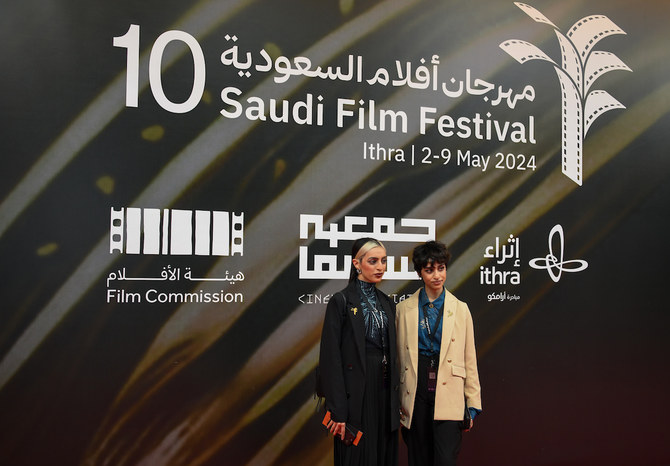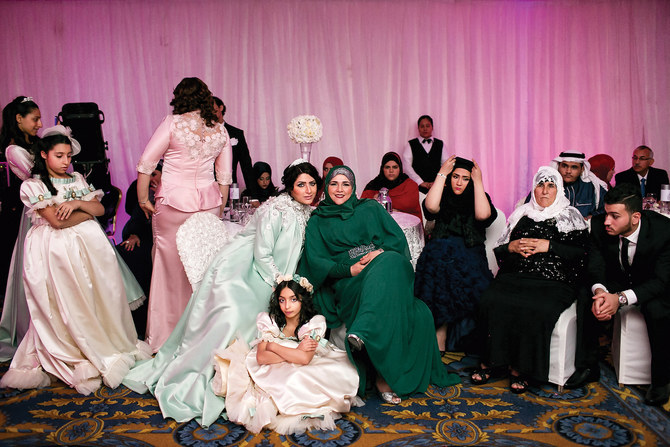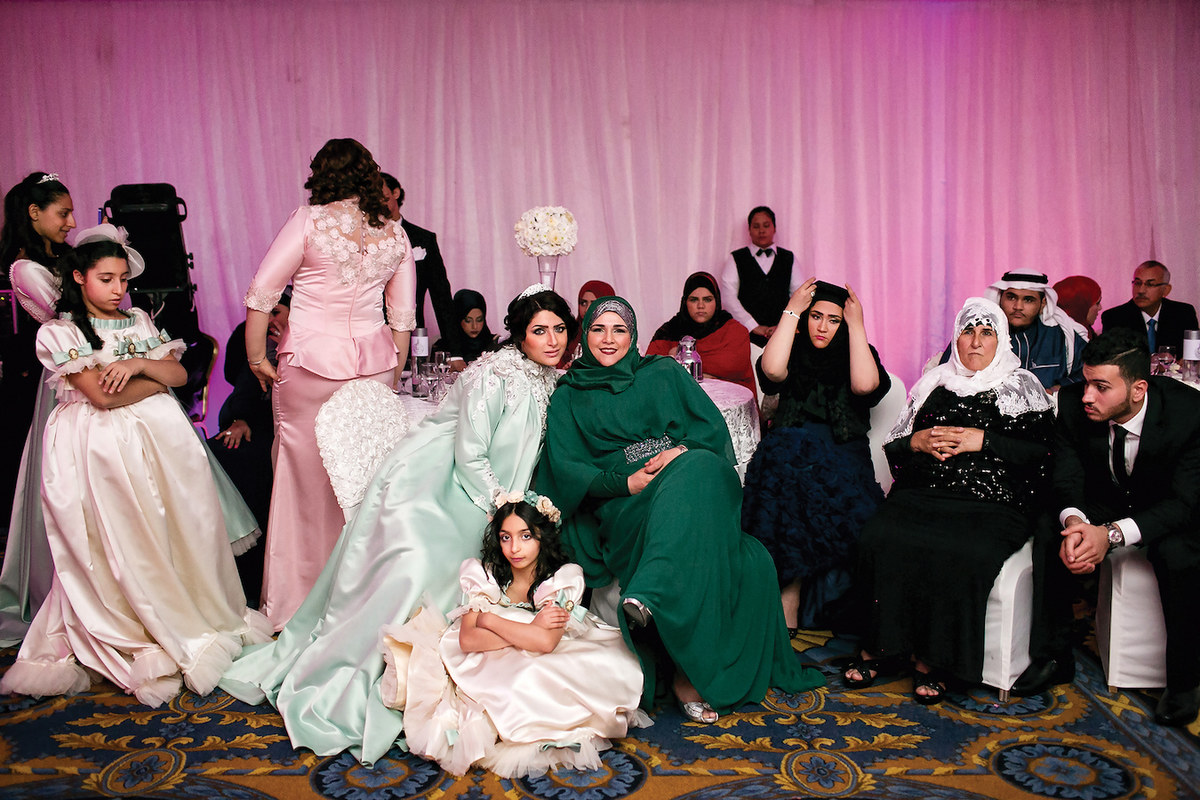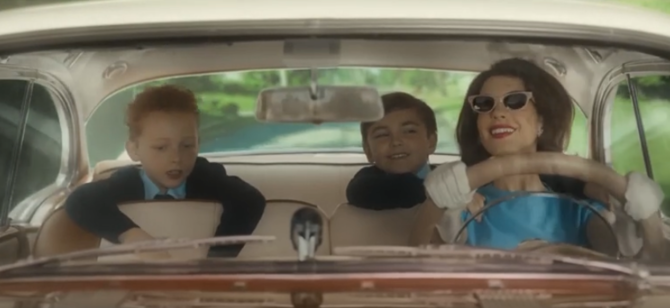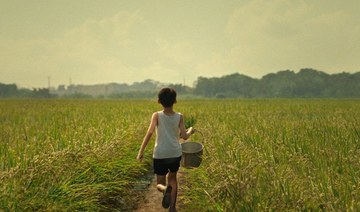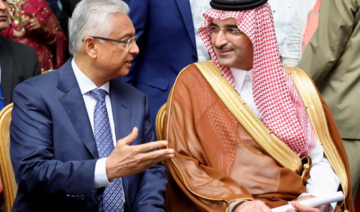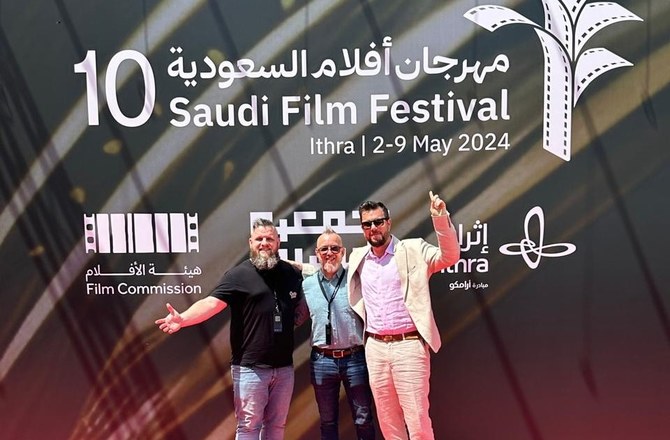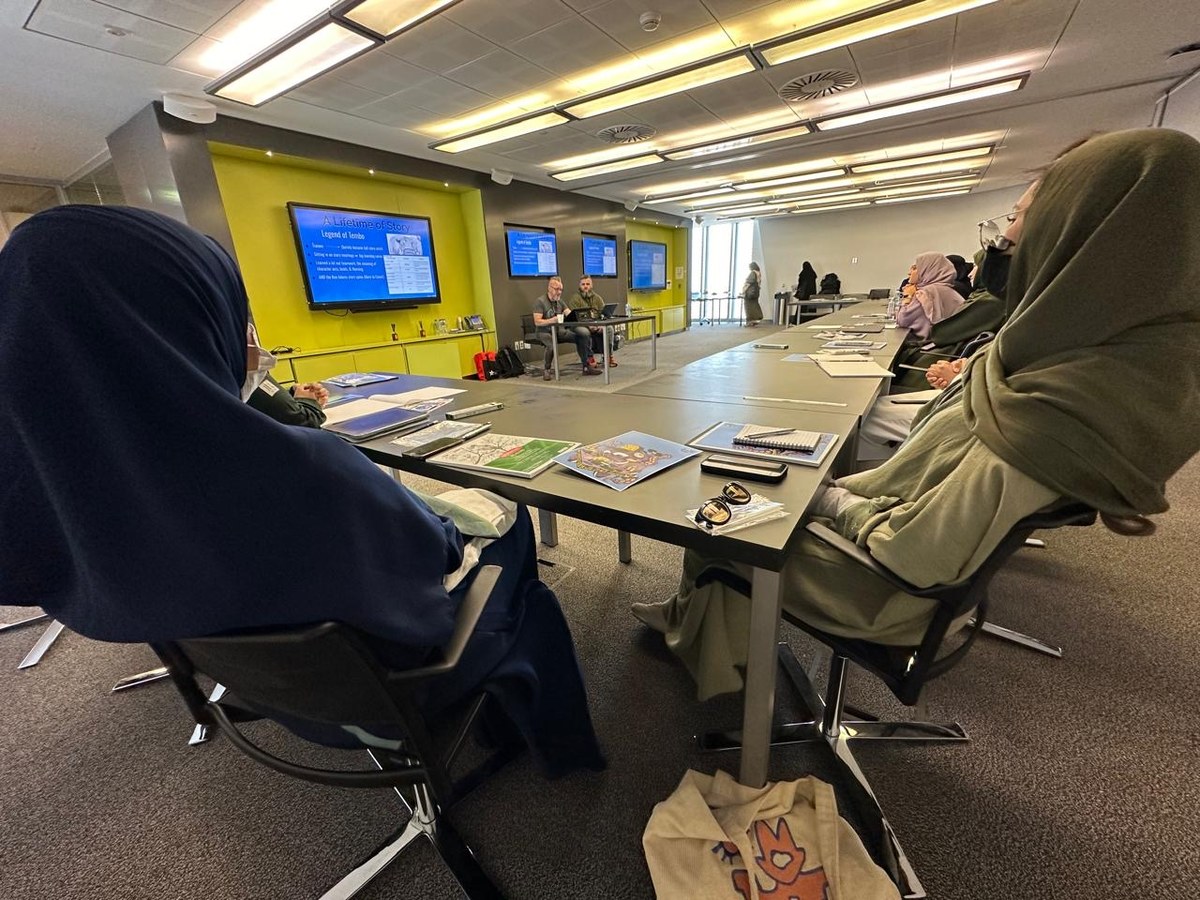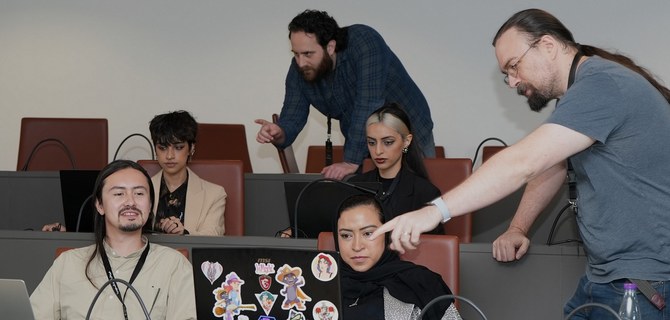NEW YORK: Dutch Moroccan Egyptian model Imaan Hammam shut down the Met Gala carpet this week wearing a white dress by Irish designer Michael Stewart’s label Standing Ground.
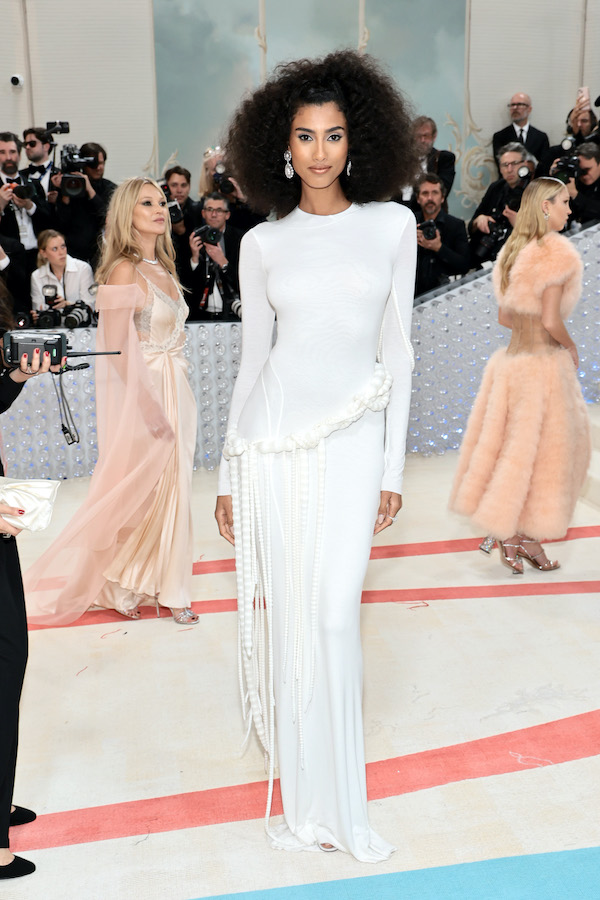
Imaan Hammam a white gown from Standing Ground. (Getty Images)
The form-fitting, long sleeved dress had cream-colored fringe detailing at the waist.
US Palestinian Dutch model Gigi Hadid was also in attendance. She wore a Givenchy ensemble in black with feathers, a drop waist and sheer train in tulle. It took more than 300 hours to make.

Gigi Hadid wore a Givenchy ensemble in black with feathers. (AFP)
US beauty influencer Meredith Duxbury championed Saudi designer Honayda Serafi at the Met Gala after-party. She donned a long black tulle dress with a checkered twill collar from the designer’s Spring/Summer 2023 collection.
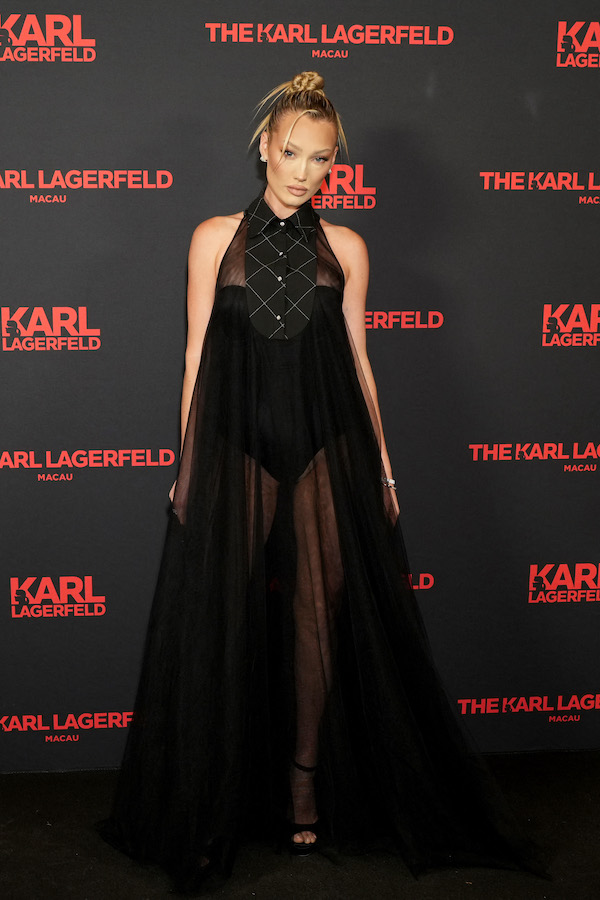
Duxbury wore a long black tulle dress. (AFP)
Meanwhile, Rihanna turned heads encased in white camellias on a jacket with a long train gown at the Met Gala.
In the spirit of Lagerfeld himself, Rihanna and her Valentino couture had the carpet to themselves save her partner, A$AP Rocky, who wore a red tartan skirt over crystal-studded jeans with a train of his own.
Around her neck was a short Bulgari necklace in Akoya cultured pearls and pearl-shaped diamonds.
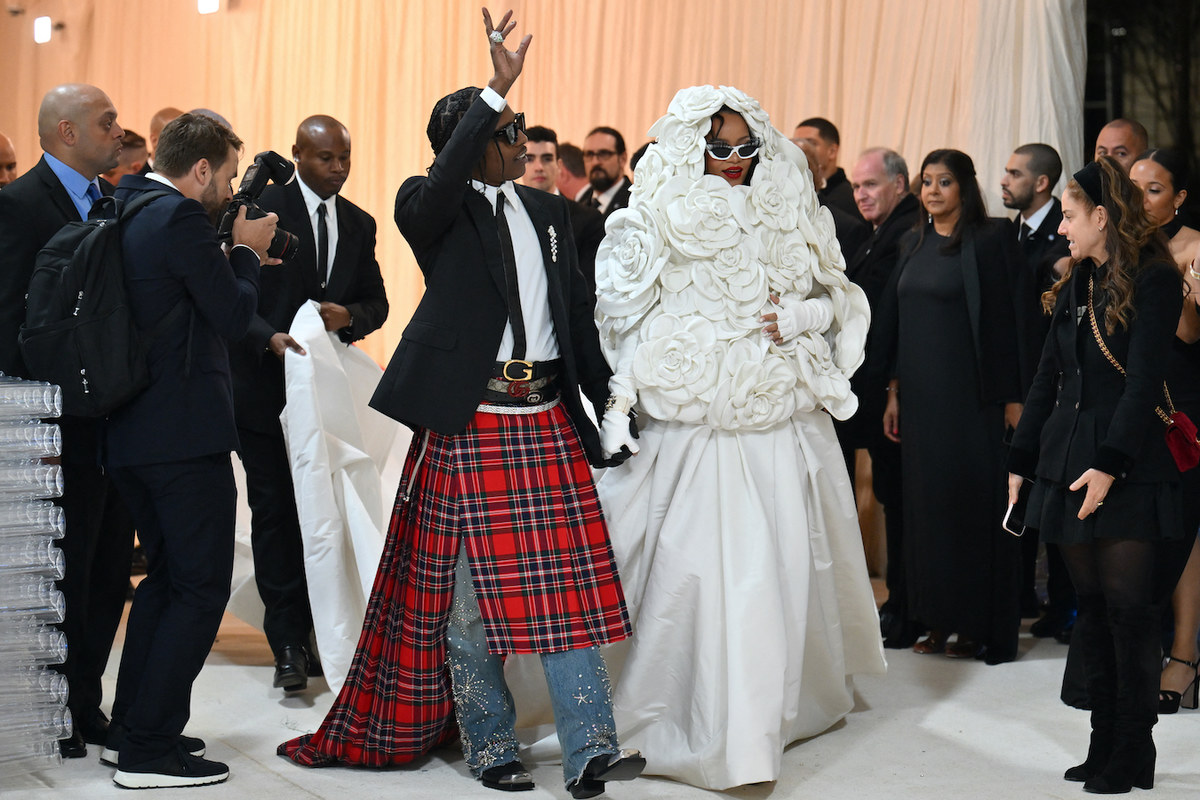
Rihanna turned heads encased in white camellias on a jacket with a long train gown. (AFP)
Lagerfeld was the honoree at the A-list gala with many in the crowd of about 400 dressed in vintage looks from the fashion houses where he worked during a career of more than 60 years.
Dua Lipa walked in a white Chanel ballgown from the fashion house’s archive and Nicole Kidman chose a look Lagerfeld himself made for her 20 years ago.
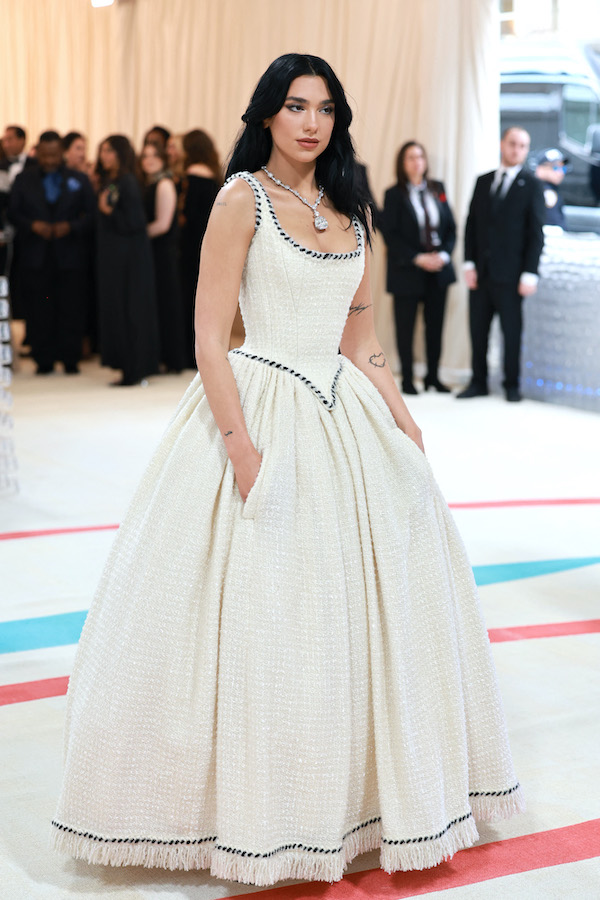
Dua Lipa walked in a white Chanel ballgown. (AFP)
Lipa, a gala co-chair, wore a Tiffany & Co. diamond around her neck. She called her cream-colored dress, by Chanel from 1992, “very, very special” as it has been on her mood boards.
Kidman said it was Lagerfeld who ignited her fashion spark. She wore a pale pink gown created by Lagerfeld for a Chanel No. 5 commercial she starred in. It's adorned with 3,000 silver crystals for the ad directed by Baz Luhrmann.
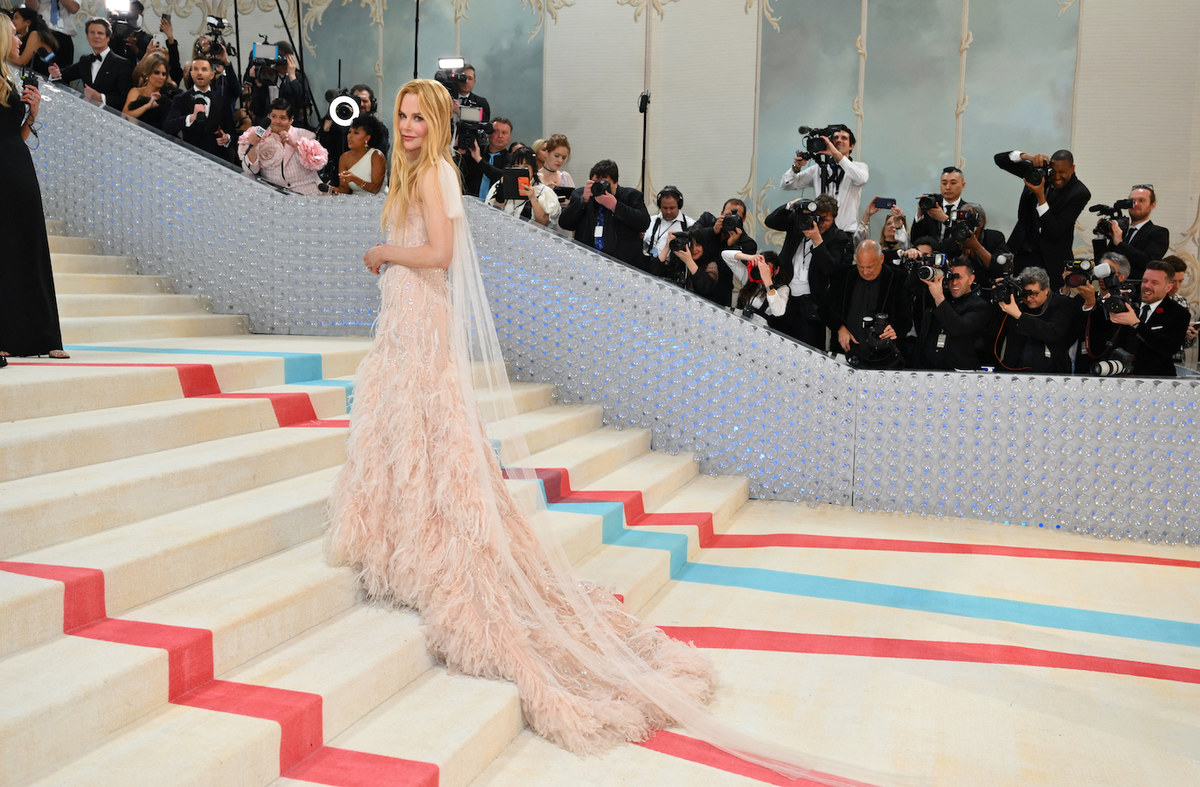
Kidman wore a pale pink gown created by Lagerfeld for a Chanel No. 5 commercial she starred in. (AFP)
“I’m very grateful to wear it,” she told The Associated Press. “He was so much a part of my life, as were his whole team. He was the one really sort of shepherded me … in terms of my love of fashion.”
Kidman topped off her look with Harry Winston diamonds.
Cardi B first donned pink then switched to a full black ballgown with, you guessed it, camellias. Up top, she said, “is giving Karl, the house of Chanel and Karl at the same time.” It was a men’s white collar shirt accent with a black men’s tie. The outfit in honor of Lagerfeld was done by an up-and-coming British design house, Chenpeng Studio.
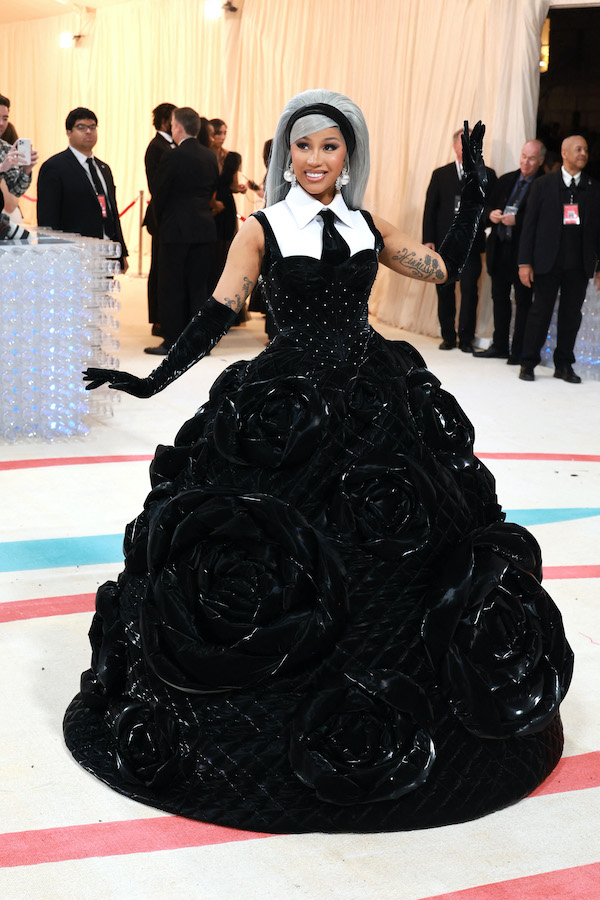
She wore a men’s white collar shirt accent with a black men’s tie.
“The Met Gala dress code was ‘in honor of Karl’ and guests definitely understood the assignment,” said Alison Cohn, deputy fashion news editor for Harper's Bazaar. “They referenced the many signatures Karl Lagerfeld developed over his six-decade plus career.”
And there were some bombshells: Serena Williams wore a flapper Gucci look when she announced she’s pregnant with her second child.
Kendall Jenner was in black, sans pants. She wore a sparkly leotard with long sleeves that has pieces doubling as a train. On her feet were kinky, towering black boots, all courtesy of Marc Jacobs.
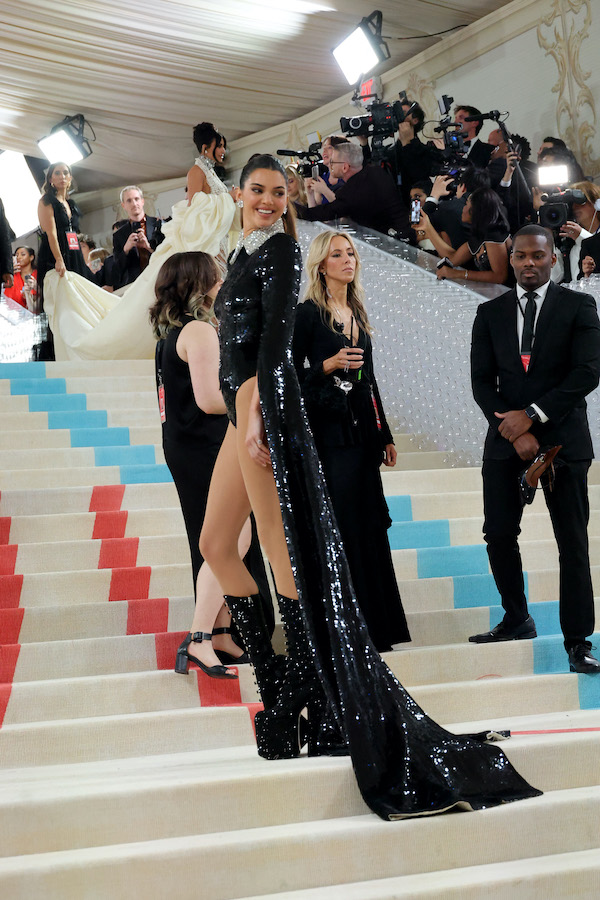
Kendall Jenner was in black, sans pants. (AFP)
Jenner’s high white collar was a nod to those worn by Lagerfeld. Her hair was in a high ponytail.
Kim Kardashian, meanwhile, went with loops and loops of pearls all over her Schiaparelli look.




